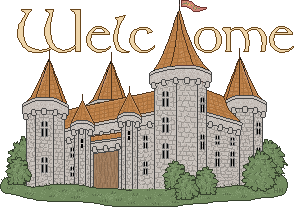
Tyler's other pages:
 Vacations
Vacations
 Awana
Awana
 Book Reviews
Book Reviews
Click on any photo to see a larger image!
December 2002 - We went to Gettysburg, PA with Grandma and Grandpa Tippet. Gettysburg is the location of one of the most famous battles of the Civil War. Fighting began on July 1, 1863. By July 3, there were more dead than there were residents in Gettysburg. Of the 165,000 men fighting, almost 50,000 were casualties.
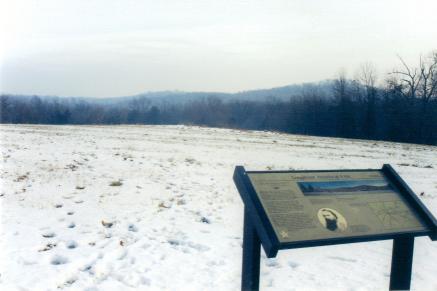 The Battle for Little Round Top - The two hills that you can see in the background of this picture are called Little Round Top and Big Round Top. Big Round Top had too many trees to be of any value as an observation or artillary position.
Little Round Top was key position. From the top of the hill, one could see all of the Union fortifications and troop movements. On July 2, 1863, both the Union and Confederate armies realized the signifcance of this hill and literally raced for it.
The Battle for Little Round Top - The two hills that you can see in the background of this picture are called Little Round Top and Big Round Top. Big Round Top had too many trees to be of any value as an observation or artillary position.
Little Round Top was key position. From the top of the hill, one could see all of the Union fortifications and troop movements. On July 2, 1863, both the Union and Confederate armies realized the signifcance of this hill and literally raced for it.
 The Union troops arrived shortly before the Confederates. There was heavy fighting and the Union was out-numbered. Union General Gouvernor Warren saw that the troops couldn't hold the position without some reinforcement. He immediately set out to find more men. He ran into the 140th New York and directed them towards Little Round Top. They arrived just as the Confederate Texan regiments were nearing the top of the hill. The 14oth New York charged into the Confederates, pushing them back down the hill!
The Union troops arrived shortly before the Confederates. There was heavy fighting and the Union was out-numbered. Union General Gouvernor Warren saw that the troops couldn't hold the position without some reinforcement. He immediately set out to find more men. He ran into the 140th New York and directed them towards Little Round Top. They arrived just as the Confederate Texan regiments were nearing the top of the hill. The 14oth New York charged into the Confederates, pushing them back down the hill!
Pickett's Charge - On the third day of fighting, July 3, 1863, General Lee (Confederate) had to make a tough decision...take the offensive or retreat. Lee made a plan to take the Union army out, once and for all. He knew that because he had attacked the Union flanks the day before, the Union army must be heavy there and weak in the center. He decided to attack the center and cut the Union in two. The problem...nearly a mile of open field (see photo) seperated the two armies.
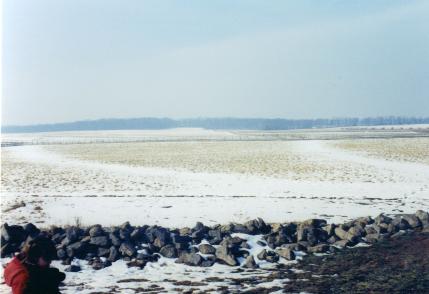
The confederate artillery took the Union forces by surprise when it started hurling shells into the line of troops. The Union was taking heavy losses, especially along Cemetary Ridge where the forces were exposed. After about 2 hours, Confederate Colonel Alexander noticed the Union batteries on Cemetery Ridge pulling out. This was just what he was waiting for! He sent word to General Longstreet that it was time to strike!
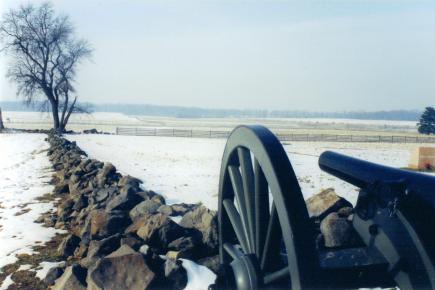 What General Alexander observed and what was actually happening were not the same! The Union was withdrawing, but only to replenish empty caissons. New troops were actually moving in to take their place in the line! The Union artillery was not weakened like Alexander thought.
What General Alexander observed and what was actually happening were not the same! The Union was withdrawing, but only to replenish empty caissons. New troops were actually moving in to take their place in the line! The Union artillery was not weakened like Alexander thought.
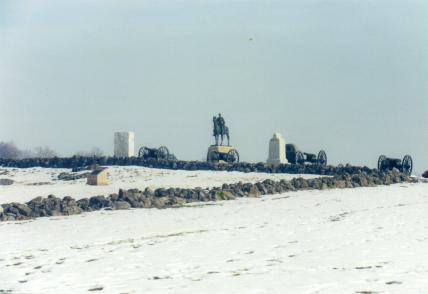 Nevertheless, the Confederate troops formed their lines and moved forward. Nearly 11,000 men in perfect order...a line half a mile long! The Union troops fired into the lines, cutting men down like blades of grass. Only a few hundred even reached the line. The Union had won, General Robert E. Lee began his retreat.
Nevertheless, the Confederate troops formed their lines and moved forward. Nearly 11,000 men in perfect order...a line half a mile long! The Union troops fired into the lines, cutting men down like blades of grass. Only a few hundred even reached the line. The Union had won, General Robert E. Lee began his retreat.
The Angle - The photo to the right shows "The Angle", the turn in the stone wall. The Confederate assault pierced the Union line at this point, only to be met by canister fire. (canister - a thin metal can containing about 25 iron or lead balls, used by artillery against close infantry.)
Images on this page are courtesy of:

